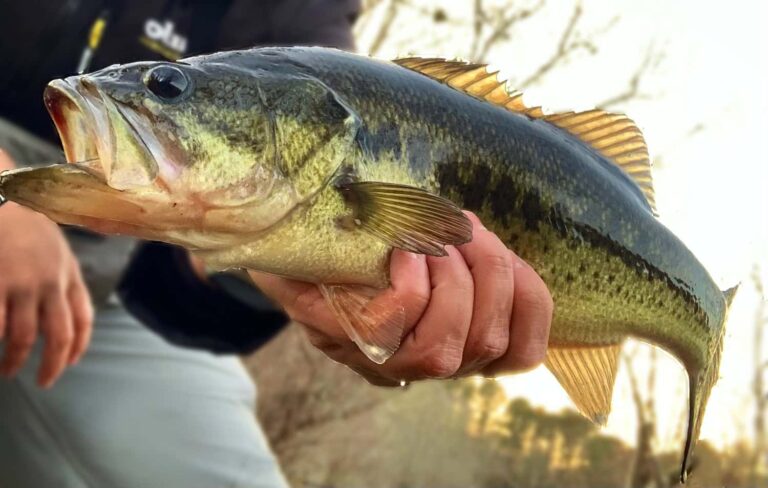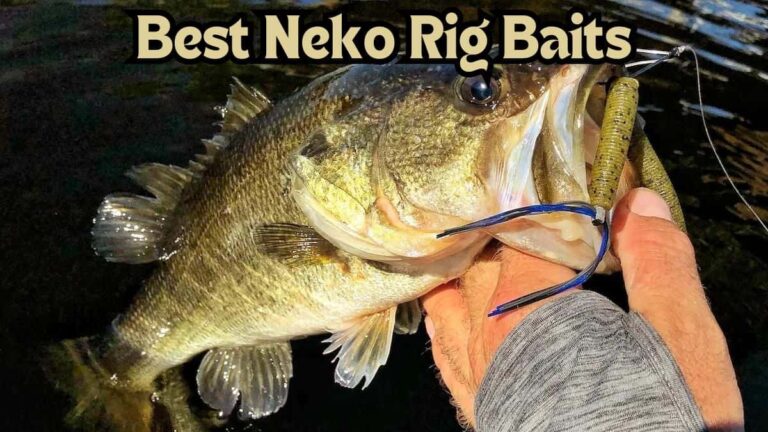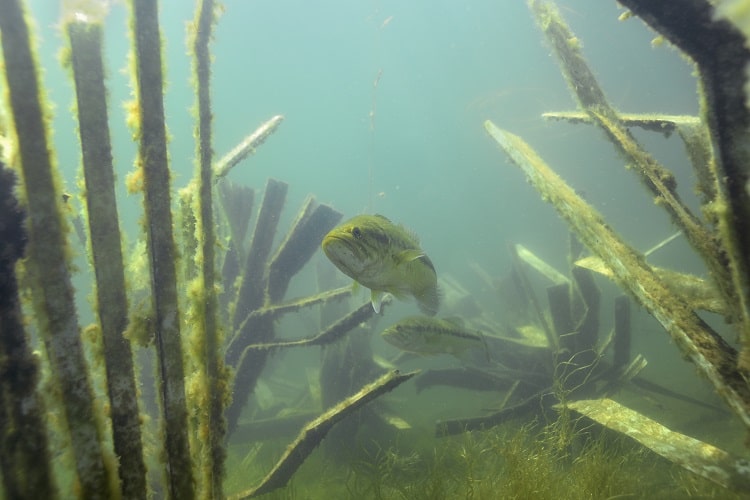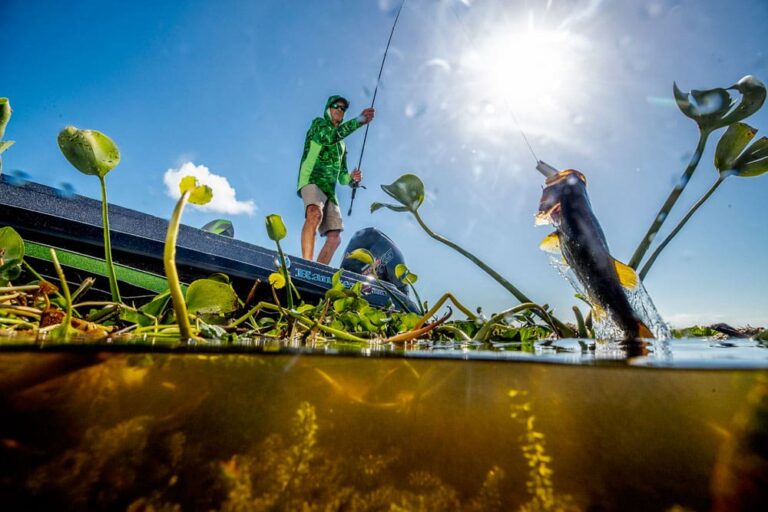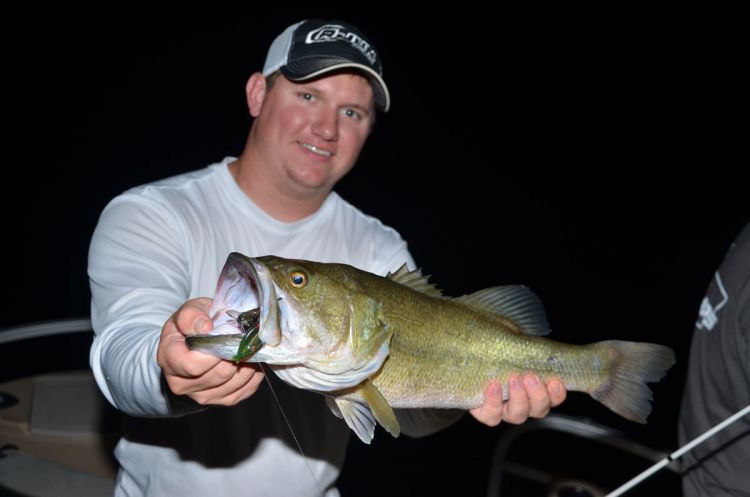When to Power Fish vs Finesse Fish in the Summertime

The summer months are the most popular bass fishing months of the year.
Everyone is fishing, even in the hot, hot weather.
But the guys that have the most success know exactly when to use their power gear vs their finesse gear.
Summer Bass Patterns
Bass will generally do the same couple of things during the summer months.
The water and air temperatures are very high, and just like us, the bass do not like to bake in the hot sun.
Bass will either hold very tightly up under shallow water cover or they will go into deep water where the sun doesn’t shine very bright.
These bass do not like moving around much during the midday hours.
They will move off these areas during the morning and evening, but hunker down when the sun is high in the sky.
These bass also want to eat. The warm water speeds up their metabolism and requires them to eat more food.
So if you can put the right baits in the right places, you can have tons of success.
When to Power Fish
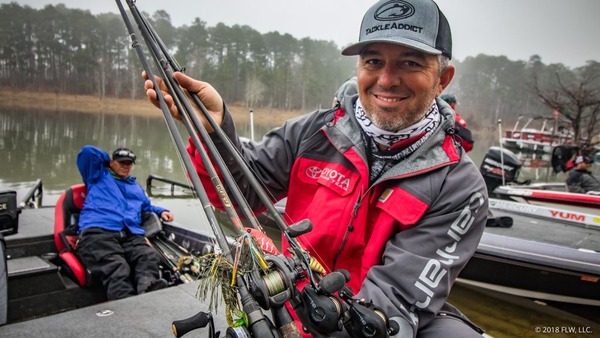
Morning and Evening
Like I mentioned above, bass will move around quite a bit more during the morning and evening hours.
They take advantage of the low light and cooler temperatures to do a lot of their hunting.
They spread out away from the cover a bit and rise up in the water column towards the surface.
This means that you have to cover a lot more water to efficiently catch bass.
The night time can also be a great time to catch some bass during the summer, especially if you don’t like the heat.
This is why power fishing is usually the best option. You can cover tons of water and call in the more aggressive bass with bigger, louder lures.
Pre-Frontal Conditions
Pre-frontal conditions are the hours or even days before a big storm rolls through.
The summer usually brings at least a few large storm systems every year, so there is plenty of pre-frontal fishing opportunities.
Before the storm arrives, barometric pressure falls, temperatures cool a bit, and clouds will likely cover the sky.
All three of these cause the bass to become more aggressive and more willing to chase after prey.
They like to feed up a lot before the unpredictable storm hits, so they use the pre-frontal time period to bulk up as a safety precaution.
These bass are very willing to chase after your lures and eat bigger, more aggressive presentations.
Heavy Cover
Going back to the sunny, hot, grueling days of the summer, you need to be able to fish in the thick, heavy cover.
The bass get very deep into the shadiest parts of this cover to escape the sun and stay cool during the daytime.
Power fishing lures like jigs, frogs, and flipping setups are really the only ways to get into thick vegetation or wood.
You need heavier duty lures, lines, and rods to get your lures in, and more importantly, get the bass out of this heavy cover.
When to Finesse Fish
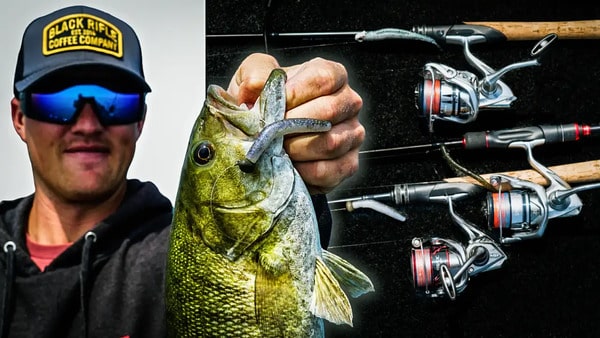
Midday Hours
When the sun gets high in the sky and the temperatures near their peak, bass do not want to move.
They are not going to chase after bait or react to aggressive lures. Instead, you need to give them an easy, enticing, and finesse presentation.
Something slow and subtle that they don’t have to work for at all. Since you can’t cover much water when finesse fishing, stick to the high percentage areas.
In shallow water, target sparse or spread out cover such as boat docks.
Most of your attention should be spent in deeper water where the sun doesn’t shine very bright.
But be sure to stay patient because summer finesse fishing can be very slow and often unpleasant.
Also Read: Mid day Bass Fishing Breakdown
Post-Frontal Conditions
As you can expect, post-frontal fishing conditions are the exact opposite if pre-frontal.
The barometric pressure rises, temperatures rise a bit, and all the clouds blow away.
Its just hot sunny skies. Bass do not like this at all. They already fed up a bit in the previous days and now with the bluebird conditions, they are very uncomfortable.
The bass won’t move around much and aren’t very hungry. So again, you need to give them subtle, easy meals that they just can’t say “no” to.
Finesse fishing is almost always the best option for post-frontal periods.
Open Water
When I say, “open water”, I am really talking about all the water that is not under heavy cover.
Anywhere that you don’t need super heavy duty, weedless gear is open water in this case.
Deeper ledges and grass lines can be the best places to target as bass will use those smaller breaks to catch as much shade as they can.
But during the day time, these bass still won’t be very inclined to chase after prey, as that would mean leaving the cool shade that they have found.
So a small, finesse bait is the best option to convince them to bite.
Keep this In Mind
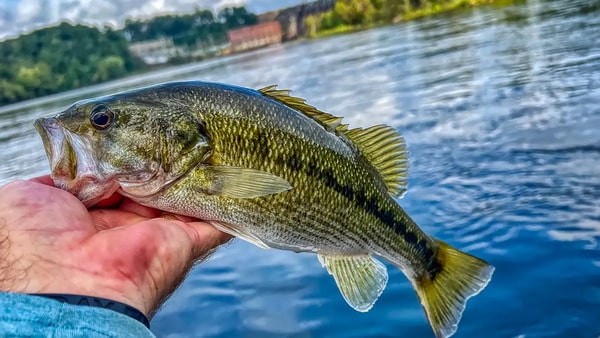
It is important that you understand that what I have just discussed are general guide lines.
Bass are super unpredictable and you never really no exactly how they will act, no matter what the conditions are.
Sometimes, power fishing will work great during midday with bluebird skies.
And sometimes, on a cloudy, pre-frontal day, finesse fishing is the only way you will get bites.
So you also need to be able to test out what the bass want every day on the water.
But most of the time, the above recommendations are the best and most reliable options.
Reeling this In
Successful bass fishing during the summer months hinges on understanding bass behavior and adapting your techniques accordingly.
Knowing when to switch between power fishing and finesse fishing can significantly enhance your catch rates.
Bass typically seek cooler, shaded areas during the hot midday hours and become more active in the early morning, late evening, and pre-frontal conditions.
While power fishing is effective for covering more water and targeting aggressive bass, finesse fishing excels in coaxing bites from lethargic fish during peak heat and post-frontal periods.
Flexibility and attentiveness to bass behavior on any given day will ultimately determine your success on the water.

